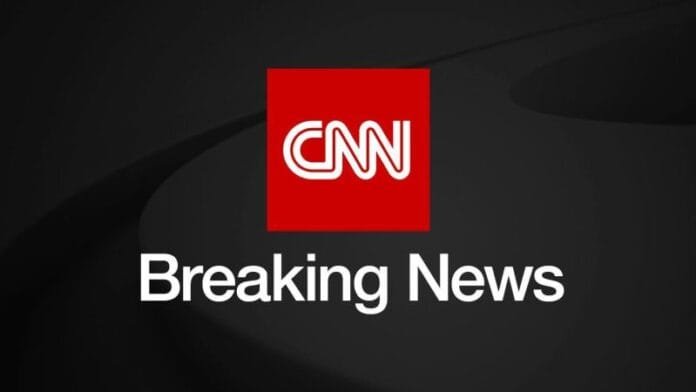Israel conducted an airstrike in southern Beirut, targeting Haytham Ali Tabatabai, allegedly Hezbollah’s second-in-command, as part of efforts to prevent threats to Israel. The strike, which resulted in one death and 21 injuries, took place in a densely populated area and was authorized by Prime Minister Netanyahu. Defense Minister Katz vowed further action against anyone threatening Israel. While Israel claims Tabatabai led Hezbollah’s armament efforts, it’s unconfirmed if he was killed. This violates a ceasefire agreement mediated by the US a year ago which has seen little progress on disarmament, leading to warnings of escalated military action.
Highlights
Here are the highlights:
* Israel struck southern Beirut, targeting Hezbollah’s second-in-command, Haytham Ali Tabatabai. It is unconfirmed if he was killed.
* One person died and 21 were injured in the strike.
* Tensions remain high despite a ceasefire, with Israel threatening increased military action.
Escalating Tensions: Israeli Strike Hits Beirut, Targetting Hezbollah Leader
A Resurgence of Conflict
A chilling wave of unease has swept through Beirut as Israeli forces conducted an airstrike in the southern part of the city. This marks the first such attack since early June, shattering the fragile peace and raising fears of renewed conflict. The target: a high-ranking member of Hezbollah. This event is not isolated; it’s a worrying escalation in an already tense region.
- The strike is the first in Beirut since June.
- It signals a potential shift towards more aggressive tactics.
Targeting Hezbollah’s Core
According to Prime Minister Netanyahu’s office, the strike aimed at "Hezbollah’s Chief of Staff, who led the organization’s buildup and armament efforts." An Israeli source identified the target as Haytham Ali Tabatabai, effectively Hezbollah’s second-in-command. While his fate remains uncertain, the intent is clear: to cripple Hezbollah’s leadership and capabilities.
"We will continue to act forcefully to prevent any threat to the residents of the north and to the State of Israel," – Israeli Defense Minister Israel Katz
Casualties and Collateral Damage
The human cost of this attack is already apparent. The Lebanese Health Ministry reported one fatality and 21 injuries, all within a densely populated residential area of southern Beirut. Images from the scene depict smoke billowing from an apartment building, a stark reminder of the devastating impact on innocent civilians. How many more lives will be affected?
- One confirmed death and 21 injuries.
- The strike occurred in a densely populated residential area.
A History of Conflict
This is not the first time Israel has targeted Hezbollah leaders. In September 2024, an Israeli strike claimed the life of Hassan Nasrallah, Hezbollah’s long-time leader. Further strikes have decimated the group’s military hierarchy. These actions, combined with continued strikes on Hezbollah infrastructure in southern Lebanon and the Bekaa Valley, despite a US-mediated ceasefire, paint a grim picture of persistent conflict.
- September 2024 strike killed Hezbollah’s leader Hassan Nasrallah
- Continued strikes violate ceasefire agreements
International Implications and Failed Disarmament
Tabatabai’s designation as a terrorist by the US in 2016, and the subsequent $5 million reward offered for information on him, underscore the international concern surrounding Hezbollah’s activities. The ceasefire agreement stipulated Hezbollah’s disarmament and withdrawal from southern Lebanon. However, progress on these fronts has been minimal, prompting warnings from Israeli officials about intensified military action unless the Lebanese government curtails Hezbollah’s influence. The fragile balance hangs by a thread.
- The US government classified Tabatabai as a terrorist.
- The ceasefire agreement has yet to achieve disarmament.
A Call for De-escalation
President Aoun’s recent accusation against Israel highlights the deep distrust between the two nations. With tensions escalating and a fragile peace hanging in the balance, the need for de-escalation and a return to negotiations is paramount. The lives of countless civilians depend on it.
What can you do? Support organizations working towards peaceful resolutions in the Middle East. Demand that your elected officials prioritize diplomacy and humanitarian aid to prevent further loss of life and suffering. The time to act is now.
FAQ
Okay, based on the provided text, here are 7 Frequently Asked Questions (FAQs) about the Israeli airstrike in Beirut, along with their answers, derived from the provided information:
1. What happened in Beirut?
- Answer: The Israeli military conducted an air strike on southern Beirut, targeting a high-ranking Hezbollah official.
2. Who was the target of the strike?
- Answer: The primary target was Haytham Ali Tabatabai, believed to be Hezbollah’s second-in-command or Chief of Staff. However, it is not confirmed whether he was killed.
3. Where in Beirut did the strike occur?
- Answer: The strike took place in a crowded residential area of southern Beirut. Images showed smoke coming from an apartment building.
4. What were the casualties of the strike?
- Answer: The Lebanese Health Ministry reported one person killed and 21 injured in the strike.
5. Why did Israel conduct this strike?
- Answer: According to Israeli Prime Minister Netanyahu’s office, the strike targeted Hezbollah’s Chief of Staff, who led the organization’s buildup and armament efforts, and to prevent threats to residents of northern Israel.
6. Is this a new conflict between Israel and Hezbollah?
- Answer: While a ceasefire was agreed upon a year ago, Israeli forces have continued to strike Hezbollah infrastructure and fighters in southern Lebanon. This latest strike suggests ongoing tensions and a potential escalation of the conflict.
7. What is the current situation regarding the ceasefire agreement?
- Answer: There has been little progress on Hezbollah’s disarmament as outlined in the ceasefire agreement, leading to warnings from Israel that military action will be stepped up unless the Lebanese government curbs Hezbollah’s activities.
